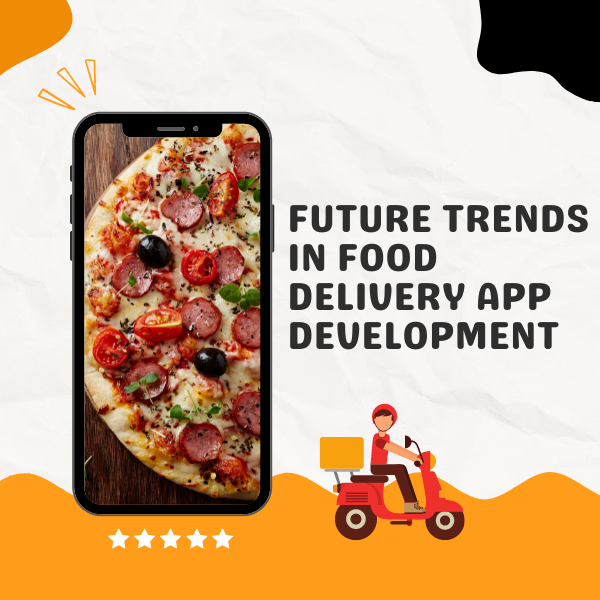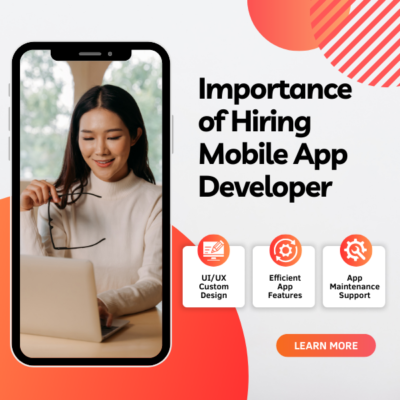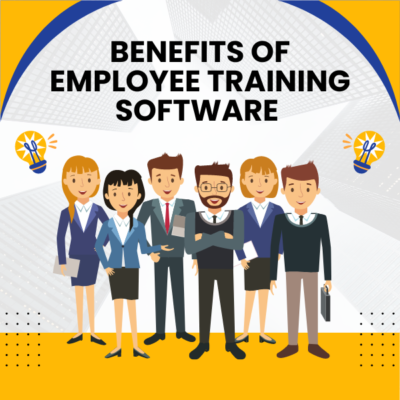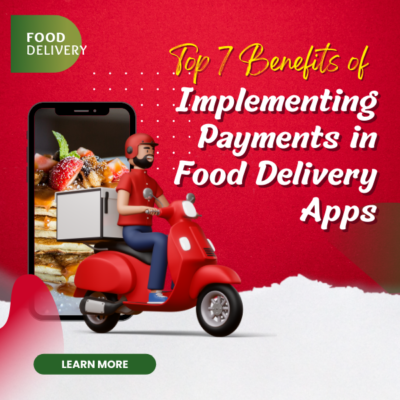In recent years, the global meal delivery app market has expanded significantly and quickly. Companies of all sizes, from startups to large conglomerates, are using this tactic to expand their clientele and enhance the calibre of their offerings.
Most companies are using on-demand food delivery software to speed up their market launch in the midst of this rush. To maintain a competitive edge, though, in a market that is becoming more and more crowded, it is imperative to take advantage of new and developing trends.
To create an application that will last into the future, companies all around the world are investing in Indian food delivery app development companies. The major developments in food delivery app development that are expected to influence the industry in the upcoming years will be examined in this article.
Table of Contents
Food Delivery App Development Trends
1. Personalized Marketing
As technology advances, companies may now provide a wide range of options to better serve their clients. A vital trend of the future, personalised marketing is emerging in the rapidly changing field of food delivery apps. It may change the way users interact with these sites.
Personalised marketing seeks to enhance customer happiness and retention by tailoring the user experience to individual preferences via the use of AI and data analytics. Traditional marketing can be replaced by using AI algorithms to evaluate user behaviour, order history, and preferences.
These data may be used by meal delivery applications to offer tailored suggestions that will draw customers in with cuisine they are likely to enjoy. This level of personalisation strengthens the bond between the app and its users and increases order conversion rates.
2. Voice-enabled ordering
It’s just a matter of time until we use virtual voice help to place restaurant orders, given its recent growth in popularity. Virtual assistants such as Alexa and Siri will enable users to have a smooth, hand-free experience. Voice technology streamlines the ordering process by enabling users to place orders by just speaking into their cellphones.
This trend increases convenience for all drivers while also enhancing accessibility for those with disabilities. The accuracy and efficiency of this ordering method are expected to soar as speech recognition technology develops, drastically changing the environment around food delivery.
3. Dynamic Pricing Model
More alternatives and reasonable rates for clients are two of the main benefits of adopting new and developing technologies. Based on ride-sharing business models, where rates are changed in real-time according to supply and demand, are dynamic pricing models.
Prices may go up a little during busy times or periods of high demand, which encourages customers to place their orders during slower periods or choose other choices. Uber Eats, for instance, utilises machine learning to forecast the demand for food delivery at various times of the day in various locations. This enables them to charge more during periods of high demand, such as peak hours, and less during periods of low demand, such as off-peak hours.
Although using dynamic pricing might be difficult and complex, it can be a useful tool for food delivery companies. By carefully regulating their prices, businesses may maximise their revenues and raise consumer happiness.
4. Cloud Kitchen Optimization
As the need for food delivery grows, cloud kitchens—also referred to as virtual kitchens or ghost kitchens—have become more and more popular. These kitchens’ only goals are to complete online orders, do away with the requirement for dine-in areas, and cut expenses. Due to its ability to free up chefs and companies to concentrate solely on cooking and delivery operations, this trend is completely changing the restaurant sector.
It will make it possible for developers to create apps that streamline processes. Only accepting online orders, Cloud Kitchen will expedite order fulfilment. To give greater flexibility, the development team can create basic kitchen-side software for the cloud.
By enabling food delivery applications to function in various places without requiring a real restaurant space, cloud kitchens can help them reach a larger audience. This may facilitate the expansion of the applications’ businesses and increase income.
5. Immersive Menu Experiences with AR/VR
Through the creation of immersive menu experiences, augmented reality (AR) and virtual reality (VR) are revolutionising the way customers engage with develop food delivery app. Users may see dishes on their smartphones before placing an order thanks to augmented reality technology, which facilitates better decision-making. The likelihood of post-order disappointment is decreased and user engagement is increased by this visual interaction.
By digitally taking consumers to restaurant settings, virtual reality (VR) elevates the experience and gives them a sense of presence while navigating the menu. The whole dining experience, from selection to consumption, might be improved as these technologies develop and are incorporated into meal delivery applications.
6. Enhancing user Engagement and Loyalty with Gamification
Apps for food delivery can benefit from the application of gamification, a potent strategy that enhances user experience. Developers of food delivery apps may boost user engagement, enhance customer loyalty, and boost revenue by implementing gamification strategies. Apps may entice users to browse menus, place orders, and utilise the platform more often by incorporating game-like aspects like points, badges, and incentives.
This increases user engagement and encourages rivalry and a sense of accomplishment. Using creative methods, the ordering procedure is made into a game in which players receive incentives for reaching goals and finishing tasks. Points might be awarded, for example, for introducing friends to the app or checking out new eateries.
This makes for an enjoyable experience and motivates customers to try out new foods and dining establishments. Furthermore, gamification may be integrated with loyalty programmes to provide users with material incentives for their regular orders and involvement, thereby increasing customer retention.
7. IoT Integration
In order to give real-time data and control, IoT devices like as temperature sensors, GPS trackers, and smart locks may be integrated into packing and delivery trucks. This makes it possible to follow delivery routes precisely, guaranteeing on-time deliveries and maximising fuel efficiency. Data gathered from sensors and communication devices may be analysed using data analytics. The food distribution process’s trends and patterns may be found using this data.
By using this information, the delivery process may be made more effective and client satisfaction can be guaranteed. Additionally, IoT devices are essential for guaranteeing food safety while it is in transit. Perishable goods can be monitored using temperature sensors, which can notify users when a temperature rises over acceptable bounds.
Additionally, delivery staff can have safe access using smart locks, which lowers the possibility of theft or tampering. By providing accurate delivery tracking, this IoT connection not only improves the user experience but also protects the quality of the food that is delivered.
8. Ai and Ml Implementation
In order to provide personalised suggestions that improve the user experience, these technologies examine the ordering history, preferences, and behaviour of the user. AI systems can forecast a user’s anticipated favourite foods based on their dietary restrictions and prior selections. It may be used to identify delivery process fraud.
Data analysis may be used to do this, including delivery addresses and consumer payment information. Additionally, to offer seamless customer service, AI-driven chatbots and virtual assistants are being integrated into meal delivery apps.
These AI-powered features give customers a quick and easy method to connect with the app by handling customer queries, processing orders, and addressing complaints. This strategy has the dual benefits of increasing customer happiness and simplifying corporate processes.
9. Blockchain in Supply Chain Management
The management and monitoring of food supply networks is being completely transformed by blockchain technology. Blockchain’s decentralised and transparent structure guarantees safe recording and easy traceability at every stage of the supply chain, from sourcing ingredients to delivery.
Customers are reassured of the authenticity and quality of the food they buy, which improves transparency and confidence. By integrating blockchain technology, food delivery applications may provide their customers with comprehensive food origin information.
They are able to confirm the origin of the ingredients, the route travelled by the food, and even the circumstances surrounding its transportation. This degree of openness encourages ethical sourcing methods, increases customer confidence, and advances sustainability initiatives.
10. Data Security and Privacy
It is critical to protect data security and privacy as the digital world changes. Apps for food delivery gather and retain sensitive user data, such as payment information, order history, and personal information. Strong data security protocols are therefore necessary to establish and preserve user confidence.
Adherence to data protection laws, such as the CCPA and GDPR, is essential. User data may be protected from unwanted access by putting robust encryption, secure authentication procedures, and frequent security audits into place.
Users are informed about the collection, storage, and use of their data by the app’s transparent data usage regulations, which are clearly shown inside the application. Food delivery applications can provide a safe environment where customers may take advantage of the convenience of digital ordering by putting an emphasis on data security and privacy.
Conclusion:
The market for food delivery reached its zenith both during and during the lockdown. Restaurant owners, both big and small, saw the prospects in this industry and seized upon them.
These days, there are several applications for meal delivery that serve clients worldwide. However, by embracing cutting-edge and developing technology, we can set ourselves apart and draw in a larger customer base.
Some of the newest developments in food delivery app development company that are poised to transform market dynamics are discussed in this article. By implementing new trends, we can provide better services at more reasonable costs and enhance the client experience.



